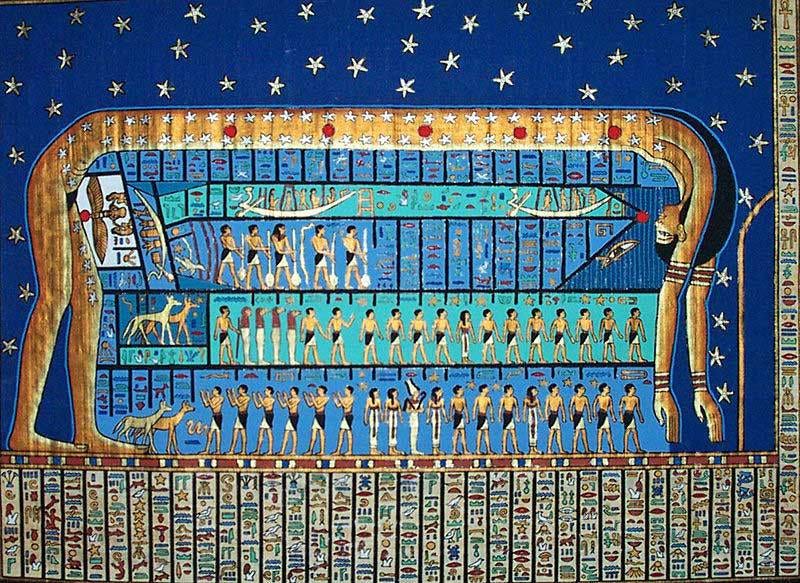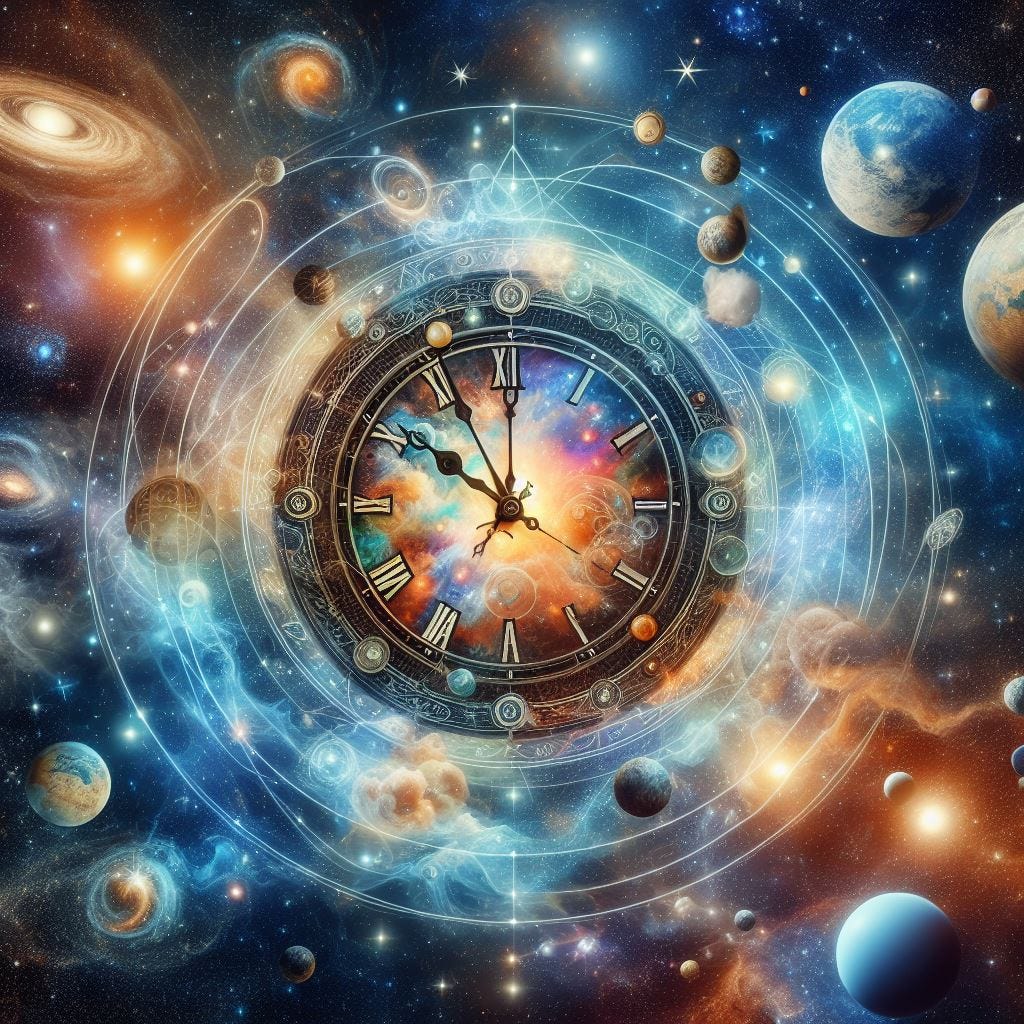In our fast-paced modern world, time is often viewed as a linear progression of days, months, and years, measured by clocks and calendars. However, this conventional understanding fails to capture the intricate interplay of celestial energies and earthly cycles that shape our experience of time. In this comprehensive article, we embark on a journey to explore the rich tapestry of calendrical traditions, the profound connection between time and nature, and the transformative power of reclaiming our lost harmony with cosmic rhythms.
Reconnecting with Time:
At the heart of our quest lies the need for a paradigm shift in our perception of time. Instead of merely counting days on a calendar, we must reframe time as a dynamic dance between celestial bodies and terrestrial phenomena. Across cultures and civilizations, diverse calendrical traditions have emerged, each offering unique insights into the cyclical nature of existence. From the ancient Mayan calendar to the lunar calendars of indigenous cultures, these systems reflect humanity's deep-seated reverence for the cosmos and its rhythms.
Our calendar, with its twelve months and irregular numbering system, is a product of historical evolution. However, its flaws are evident upon closer inspection. For instance, December, which derives its name from the Latin word "decem" meaning ten, is paradoxically the twelfth month. Similarly, October (octo) and November (novem) imply the eighth and ninth months, respectively. These linguistic clues hint at a deeper discrepancy within our calendar system, suggesting a disconnect between its structure and the natural order it purports to represent.
Originally, in the earliest Roman calendar, attributed to Romulus, the calendar consisted of ten months, with the year beginning in March and ending in December. Each month had either 30 or 31 days, totaling 304 days in a year. This calendar aligned more closely with the natural cycles of the seasons, particularly in an agrarian society where timing was crucial for agricultural activities.
January: The Janus Effect January, named after Janus, the Roman god of transitions and beginnings, marks the start of the new year. However, its position as the first month belies its historical roots. Originally, March was the first month in the Roman calendar, making January a later addition. This shift reflects a departure from the natural order of time, as January's placement at the beginning of the year disrupts the continuity of the seasonal cycle.
February: The Roman Purge February, derived from the Latin word "februare," meaning "to purify," carries symbolic significance as a month of purification and cleansing. In ancient Rome, February was a time for ritualistic purification ceremonies, aligning with the transition from winter to spring. However, its designation as the shortest month in our calendar underscores the arbitrary nature of our timekeeping system, with no inherent connection to celestial or seasonal cycles.
March (Martius): The Original New Year March, named after Mars, the Roman god of war, was traditionally the first month of the Roman calendar. Its association with Mars symbolizes a time of rebirth and renewal, as winter gives way to spring. However, the shift of the new year to January displaced March from its rightful place as the beginning of the annual cycle, further highlighting the discordance between our calendar and natural phenomena.
April (Aprilis): The Month of Aphrodite April, named after Aphrodite, the Greek goddess of love and beauty, evokes images of blooming flowers and fertility. In ancient Rome, April was a time of celebrations and rituals honoring the goddess, marking the onset of spring and the awakening of the natural world. Yet, its positioning as the fourth month underscores the arbitrary rearrangement of the calendar, divorced from the organic flow of seasonal change.
May (Maius): Maia's Domain May, named after Maia, the Roman goddess of fertility and growth, represents a time of abundance and vitality. In ancient Rome, May was dedicated to Maia, with festivals and rites celebrating the fecundity of the earth. However, its placement as the fifth month highlights the disconnect between our calendar and the agricultural cycles it purports to reflect, emphasizing the artificiality of our temporal framework.
June (Juniius): Juno's Influence June, named after Juno, the Roman goddess of marriage and childbirth, heralds the arrival of summer's warmth and vitality. In ancient Rome, June was a time of weddings and fertility rituals, honoring Juno's role as the patroness of marriage. Yet, its position as the sixth month underscores the arbitrary ordering of our calendar, divorced from the cosmic rhythms that govern the changing seasons.
July (Quintilis): The Julian Legacy July, named after Julius Caesar, reflects the influence of Roman emperors on our calendar system. Originally known as Quintilis, meaning "fifth" in Latin, July was renamed in honor of Julius Caesar, who reformed the calendar in 46 BCE. This renaming exemplifies the political manipulation of time, as rulers sought to immortalize themselves through calendrical modifications.
August (Sextilis): Augustus's Ascendancy August, named after Augustus Caesar, continues the trend of imperial influence on our calendar. Formerly known as Sextilis, meaning "sixth" in Latin, August was renamed in honor of Augustus, who succeeded Julius Caesar as emperor. This renaming further highlights the arbitrary nature of our calendar, shaped by the whims of powerful rulers rather than the natural order of time.
September: The Seventh Month? September, derived from the Latin word "septem," meaning "seven," belies its current position as the ninth month in our calendar. Originally, September was indeed the seventh month in the Roman calendar, aligning with its numerical etymology. However, subsequent calendrical reforms displaced September and other months from their original positions, disrupting the numerical sequence and distorting the natural order of time.
October: The Eighth Anomaly October, from the Latin word "octo" meaning "eight," presents another discrepancy in our calendar system. Despite its numerical etymology, October is the tenth month in our calendar, reflecting the arbitrary rearrangement of months over time. This anomaly underscores the disconnect between our calendar and the numerical symbolism embedded within its structure.
November: The Ninth Misnomer November, derived from the Latin word "novem" meaning "nine," continues the pattern of numerical incongruity in our calendar. Like October, November's numerical etymology contradicts its position as the eleventh month, revealing the discordance between our calendar and its linguistic origins. This discrepancy highlights the artificiality of our temporal framework, divorced from the natural order it claims to represent.
December: The month of December, deriving its name from the Latin word "decem," meaning ten, was indeed the tenth month in this early Roman calendar. It marked the end of the year, with the winter solstice falling within its timeframe, a significant celestial event in many ancient cultures.
However, over time, the Roman calendar underwent several reforms, most notably under the rule of Julius Caesar in 46 BCE. The Julian calendar, implemented by Caesar, introduced significant changes to the structure of the calendar. Among these changes was the addition of two new months, January and February, which were inserted at the beginning of the year, pushing December to become the twelfth month.
Despite this reordering of the months, the name "December" retained its original etymology, reflecting its historical roots as the tenth month. This linguistic artifact serves as a reminder of the calendar's evolution and the disconnect between its original design and its current form.
The Julian calendar, while addressing some deficiencies of earlier Roman calendars, such as the misalignment of the lunar and solar years, still maintained certain inconsistencies. For example, the varying lengths of months and the lack of a standardized system for leap years led to inaccuracies in timekeeping over the long term.
In subsequent centuries, further reforms were made to the calendar, culminating in the Gregorian calendar introduced by Pope Gregory XIII in 1582. The Gregorian calendar, which is the calendar system most widely used today, refined the rules for leap years and made adjustments to better align the calendar with the solar year.
Despite these refinements, the legacy of the Roman calendar's evolution remains evident in the naming conventions of the months. December, once the tenth month, now occupies the position of the twelfth month, a linguistic relic of a bygone era. This discrepancy serves as a reminder of the complexities inherent in the development of our calendar system and the ongoing quest for precision and accuracy in measuring time.
Exploring Calendrical Traditions:
One of the keys to reconnecting with time is to explore and embrace the diversity of calendrical traditions from around the world. In ancient civilizations such as Egypt, Mesopotamia, and China, calendars were intricately linked to celestial observations, agricultural cycles, and religious rituals. The Egyptian calendar, for example, was based on the annual flooding of the Nile River, while the Chinese calendar incorporated lunar phases to mark the passage of time.
Similarly, indigenous cultures across the globe developed their own calendars based on the movements of the sun, moon, and stars. For the Maya of Central America, the Long Count calendar served as a cosmic odometer, tracking the cycles of creation and transformation. In Australia, Aboriginal peoples followed Dreamtime calendars that mapped out the spiritual landscape of the land. These diverse traditions offer profound wisdom and insights into the interconnectedness of all life.
Aligning with Planetary Dynamics:
To fully reconnect with time, we must align ourselves with the planetary dynamics that govern our existence. The Earth, with its axial tilt and orbit around the sun, gives rise to the cycles of the seasons, the solstices, and the equinoxes. By attuning ourselves to these celestial rhythms, we can deepen our understanding of time and its sacred significance.
The solstices, for instance, mark the longest and shortest days of the year and have been celebrated by cultures around the world for millennia. In ancient Britain, the Druids gathered at Stonehenge to honor the winter solstice, while in the Andes Mountains of South America, the Inca built temples aligned with the summer solstice. These rituals remind us of our intimate connection to the Earth and the cyclical nature of life.
Reclaiming Lost Connections:
In our modern world, the Gregorian calendar has become the dominant standard for timekeeping, often overshadowing the rich diversity of alternative calendrical systems. However, this standardized approach has led to a disconnection from the natural rhythms of the cosmos and the Earth. The months of the Gregorian calendar, with their arbitrary numbering and names, obscure the deeper significance of time and its relationship to the natural world.
To reclaim our lost connection with time, we must embark on a journey of spiritual renewal and collective evolution. This journey begins with a reevaluation of our relationship to time and a recognition of its sacred dimensions. Through rituals, ceremonies, and conscious living, we can realign ourselves with the cosmic symphony and harmonize with the rhythms of the universe.
Embracing a Harmonious Future:
The complexities of the modern world and the need for a harmonious relationship with time have never been more urgent. By embracing diverse calendrical traditions, integrating planetary dynamics into our lives, and reclaiming our lost connections with the cosmos, we can usher in a new era of spiritual awakening and collective transformation.
The journey towards harmony with time is a deeply personal and collective endeavor. It requires us to transcend our narrow conceptions of time and embrace the boundless mysteries of the cosmos. As we rekindle our reverence for the celestial rhythms that govern our existence, we open ourselves to a deeper sense of purpose, meaning, and belonging in the vast tapestry of the universe.
Conclusion:
In conclusion, the quest to reconnect with time is a journey of exploration, discovery, and transformation. By embracing diverse calendrical traditions, aligning ourselves with planetary dynamics, and reclaiming our lost connections with the cosmos, we can embark on a path of spiritual renewal and collective evolution. As we journey forward, let us remember that time is not merely a measurement but a sacred dance of creation and renewal, inviting us to join in its eternal rhythms.
Support Our Work with a Bitcoin Donation
We also offer the opportunity to support our work and help us continue building the Financial Anarchy community. If you would like to contribute, we gratefully accept donations in Bitcoin. Your support will enable us to create more educational content, engage in meaningful activism, and further our mission of challenging the status quo. To donate, please use the following Bitcoin address:
Thank you for joining us on this journey of understanding and change. Together, we can shape a brighter financial future for all.












